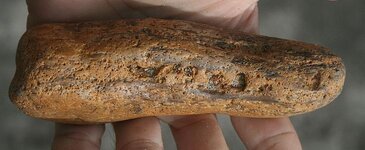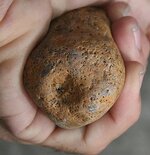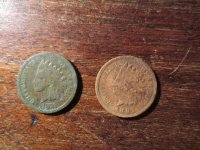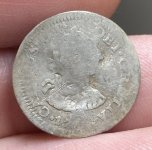IndianRiverSonrise
Sr. Member
- Jun 16, 2007
- 270
- 3
- Detector(s) used
- Various
I found this on a beach where some biface points have been found. I wonder if this could be a tool. It fits my hand so nicely, but I guess it could be shaped that way by chance, but I would guess that the large end would be more flat or even if it was used as a tool. I just don't know anything much about this stuff so need your help. Thanks
Here are the photos.
Here are the photos.
Amazon Forum Fav 👍
Attachments
Upvote
0








